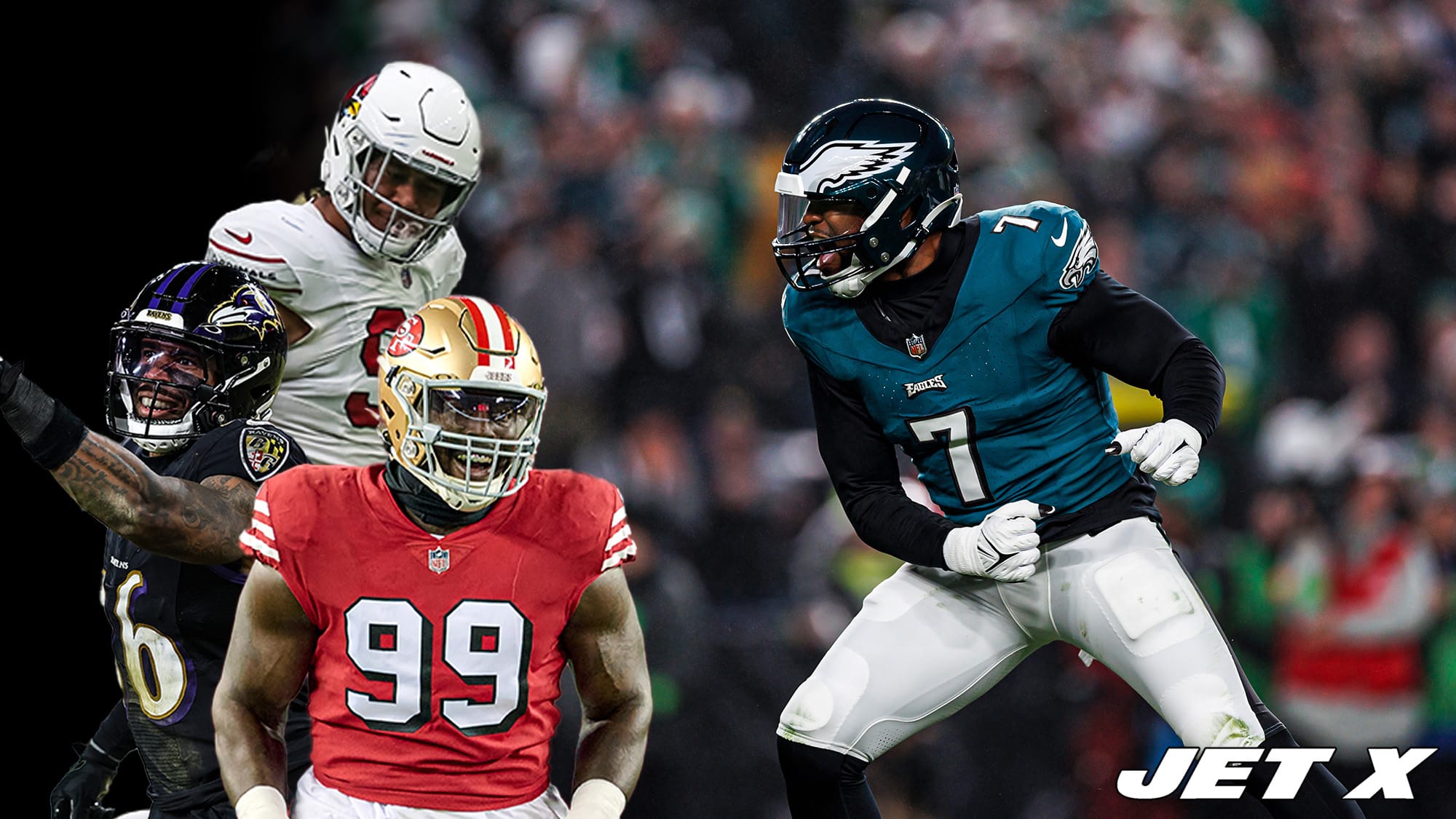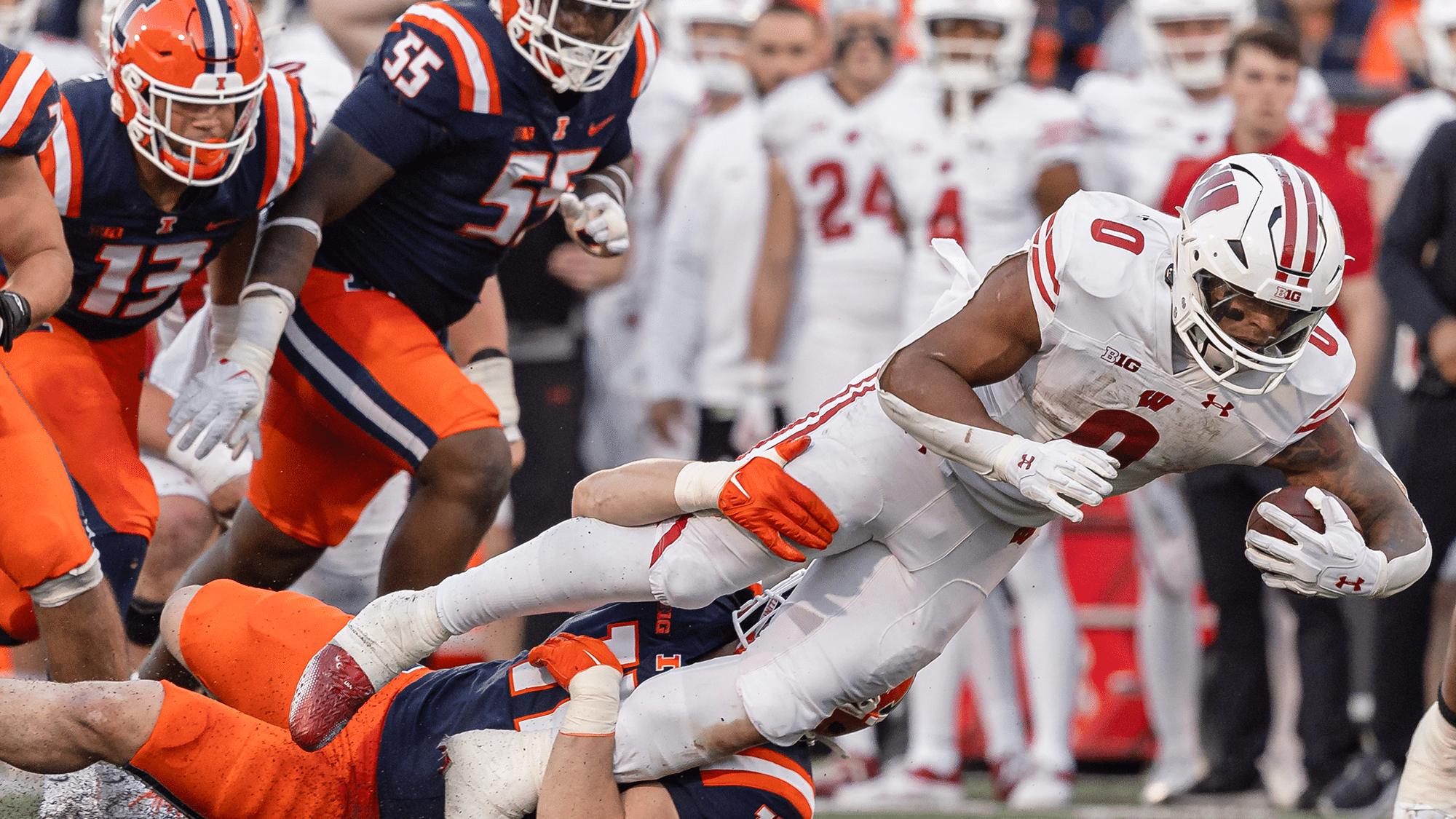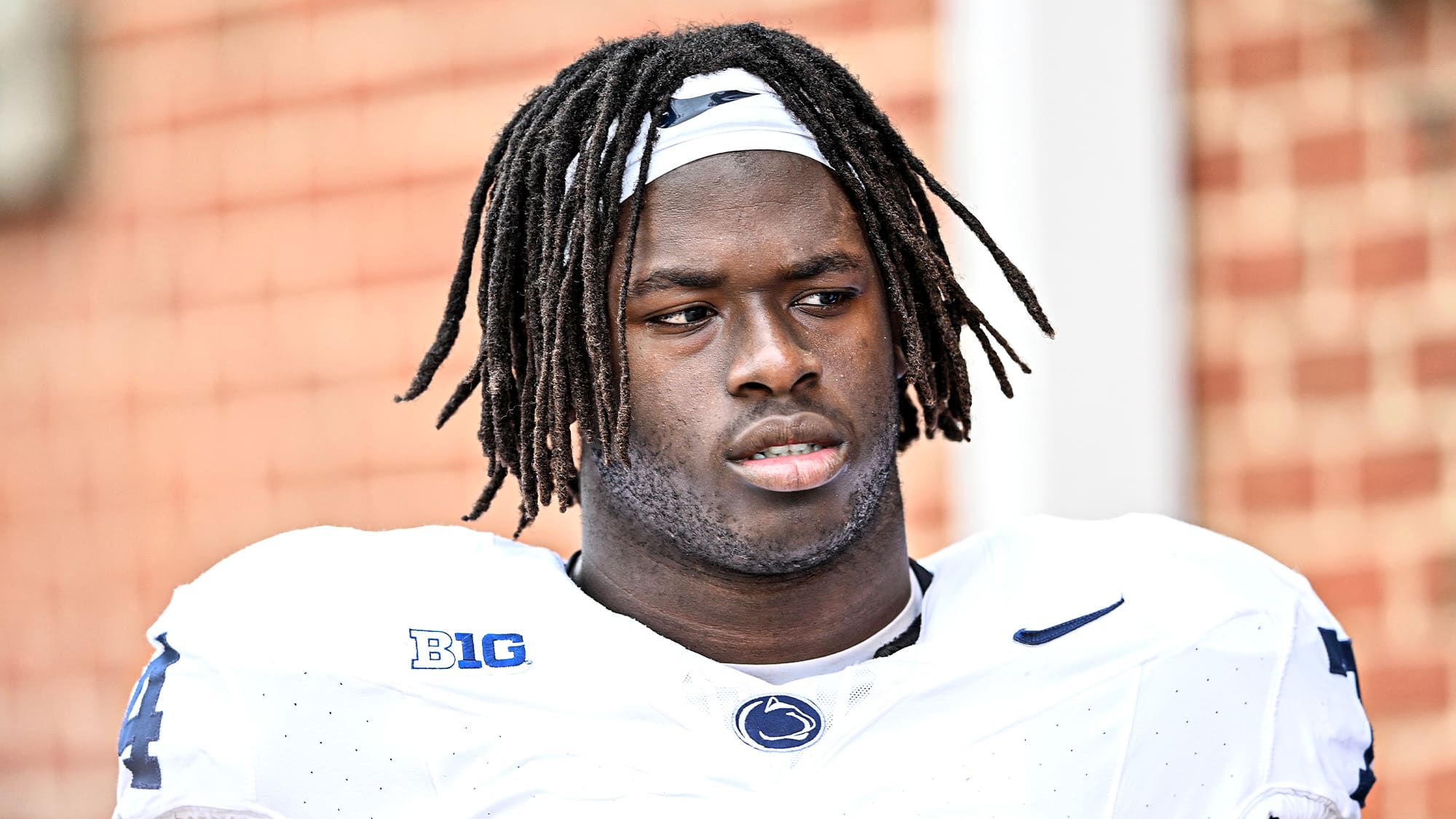Drafted three rounds apart, both Johnson and Clemons are critical parts of the Jets’ defense
There are many players on the New York Jets‘ defense who receive credit for their complete turnaround.
Sauce Gardner gets the most hype as befits the No. 4 overall pick, especially one who combines such swag and panache with an elite (perhaps All-Pro?) level of play.
Quinnen Williams is still underrated despite his breakout season, but he’s also second in Pro Bowl voting at his position and is acknowledged to be the Jets’ biggest difference-maker defensively.
D.J. Reed has started to garner more recognition for his contributions. C.J. Mosley is overrated but always praised on broadcasts for leading the defense. Bryce Huff broke onto the national stage when he hit Josh Allen in a critical spot, helping the Jets upset the Bills.
However, two Jets defensive linemen are still not given much credit around the league. You don’t hear about them on broadcasts or even necessarily notice when they make plays. But they’re both coming on strong, and they’re both critical pieces on the team.
Jermaine Johnson and Micheal Clemons are quiet but significant boosters of the Jets’ defensive turnaround. Neither might be an elite pass rusher right now, but they still make things happen on the field.
Run game impact
Johnson, the No. 26 overall pick, has been pretty much exactly as advertised for the Jets. The team took him for his upside, not necessarily expecting him to be a dominant pass rusher from Day 1 as evidenced by his lower snap counts. They wanted his edge-setting, toughness, and 100% effort, as well as his high-character impact in their locker room. They could have taken Kayvon Thibodeaux with the No. 4 overall pick or gone for George Karlaftis at No. 26, but the Jets wanted Johnson.
Boy, has Johnson delivered in the run game. He does not qualify as an edge defender in run defense due to just 83 snaps (in part because he missed several games due to injury); however, among 108 edge defenders with at least 75 run defense snaps, Johnson has the highest stop rate at 12.7%. Stop rate is defined as a tackle that causes a failure for the offense (generating a negative Expected Points Added, meaning a stop for less than 40% of required yardage on first down, 60% on second down, or 100% on third and fourth down).
For reference, the average stop rate among qualified edge defenders (min. 120 run snaps) is 6.3%, which means that Johnson is double the average.
This dominance shows up on film, as well. Johnson often shoves away multiple offensive linemen to set an edge, allowing the Jets’ other defenders to rally to the football. The missed tackles among the team’s linebackers in recent weeks emphasize the importance of that extra second or two to swarm the running back. Furthermore, Johnson himself has not missed a single tackle in run defense; the league average among qualifiers is 11%.
Positivity?
JJ BLOWING up the pulling RG and making the tk on the RB pic.twitter.com/2jk30FP20A
— Joe Blewett (@Joerb31) November 21, 2022
Meanwhile, Clemons has not been quite as dominant, but he’s still above average. His 7.3% stop rate is better than 73% of edge defenders (min. 75 run snaps), and he also has not missed a tackle in run defense. This is particularly important when taking into account that Clemons is backing up Carl Lawson, who is a below-average run defender. Lawson’s stop rate is just 3.6%, and his 25% missed tackle rate in the run game is the eighth-worst among those 108 edge defenders. While John Franklin-Myers holds his own in the run game on the other side, having Clemons in there on running downs is a huge boon to the Jets’ run defense.
True pass sets
While neither Johnson nor Clemons has quite gotten there as a pass rusher just yet, both have started to come on recently. Johnson had a critical sack of Josh Allen in a situation that was exactly as the Jets envisioned when they drafted No. 52: chasing down the Bills’ monster QB with elite speed, maximal effort, and a massive tackle radius.
Jermaine Johnson’s pre-draft evaluation to “be the guy that can chase down Josh Allen” and Jermaine Johnson chasing down Josh Allen pic.twitter.com/3GoDHDdLM7
— Main Team (@MainTeamSports) November 17, 2022
Both Johnson and Clemons have found more success in the pass rush game when the offense is in a true pass set, meaning a pass play that excludes the rush-eluding play designs: screens, play-action, rollouts, and plays with a quarterback time to throw outside 2-4 seconds.
Pass-rushing statistics in true pass sets are far more stable from year to year and provide a better idea of how the player truly performs as a rusher. Although it is important for an edge rusher to recognize screen passes and play-action to refine his game, there is higher variance in that performance.
Clemons is actually above average in his pass rush on true pass sets despite a below-average pure pressure rate (9.6% vs. the league average of 11.2%). He has an 18.5% pressure rate in those situations, which would place in the 74th percentile among qualified edge rushers (min. 195 total pass-rush snaps).
Even more impressive, his pass-rush win rate of 32% is the sixth-best among edge rushes in true pass sets. Clemons only has 94 total rushes, but his impact on pure pass-rush plays has been impressive. Furthermore, Carl Lawson is far less impressive in those situations, racking up just a 13.1% true pass set pressure rate.
Micheal Clemons with a clean win vs. Dion Dawkins using the cross-chop/club/rip 🔥 pic.twitter.com/KjoAbRY45p
— Michael Nania (@Michael_Nania) November 11, 2022
Johnson also has some work to do on his overall pass rush, as his 8.8% pressure rate is quite a bit below the 11.2% average for edge rushers. However, he’s dead average, 14.3%, in true pass sets, which means he can still be relied upon in pass-rush situations. His pass rush win rate of 19% in true pass sets is also average.
Jermaine Johnson had some nice reps for the Jets against the Bills.
Love this one. Great get-off, shows the power in his hands and then superb effort to bounce off the block from the right guard and pursue Allen as he breaks the pocket. pic.twitter.com/ZcDL2fB08N
— Nicholas McGee (@nicholasmcgee24) November 8, 2022
The Jets have a tendency to use their backups at the edges at the same time rather than staggering them. It is that much more important, then, that both of them provide legitimate value, as they cannot be covered for by a starter on the other side. By the numbers and on the field, both Jets rookies have more than held their own with the responsibility placed upon them.
Johnson’s and Clemons’s success in limited snap counts this season may allow the Jets to save cap space in the offseason by restructuring or releasing one of their pricey veterans, John Franklin-Myers or Carl Lawson (with Lawson far more likely due to his decreased production and minimal dead cap).
That’s getting a little ahead of ourselves, though. The Jets are in the thick of the playoff race, and their young edge rushers have played an underrated but impressive role.












Great observations, in general, and w/ data specifics.
I love these two guys. High motor is something we have sorely missed, and is so evident in other great players around the league (see Bosas and Watts).
IMO, we should play JJ on all downs except the most obvious passing downs. Same on right side w/ Clemons. As you say, if the opposition passes on these downs neither JJ nor Clemons is a slouch. Clemons’ bull rush is nearly unstoppable.
I still think JFM is best used inside (one of the writers here provided stats that bear this out via production, Nania?)
By any means, both JJ and M Clemons are draft successes and will provide the team w/ added flexibility come FA time. My vote would be to jettison Lawson.
Johnson has been getting about a third of the snaps for most of the season. I’d like to see that increase. I don’t know if he should get starter-level snaps, since JFM is really coming on. I just think there’s a bit of a logjam on the left side of the D-line.
Nania and I both had articles in the offseason and earlier in the regular season showing that JFM is best used inside. However, the Jets clearly don’t want to put him there on a regular basis for one reason or another. As I said, JFM has been coming on lately, and it was pointed out that his toe injury from earlier in the season could have been significantly hampering his play.
I think that cutting Lawson is a distinct possibility at this point. He does make an underrated impact with his bull rush, often pushing his guy toward the QB in a way that gives other guys a chance, but his numbers are just not up to par. With a $15 million cap hit and just $600K in dead cap, he was a prime cut candidate before the season, anyway, and there’s no reason to think differently at this point.
Mosely and Lawson need to restructure in a very team friendly way or be replaced. Ik one of then, I guess Mosely based on the dead money you attributed to Lawson has a big dead cap number.
Back on more reasonable deals while bringing in younger guys.
I’d say Lawson is easier replaced because of the depth at DE but $$ might be needed to upgrade LB in the offseason.
Waaaay off topic: I’ll never understand trading Demario Davis and replacing him with Williamison a number of years ago.
Davis turned into one of the better mlb in the league and really helped lift the Saints D.
We helped out the Saints so much w/ Jonathan Vilm we thought we’d repeat the process.
Losing those two guys and Abraham (more abt $$$) were absolute disasters.
2009 & 2010 would have been a great time to have Abraham and Vilma.
Yeah, they definitely could have used both.
The thing about Vilma was that he was a 4-3 middle linebacker, and when the Jets switched to a 3-4, he didn’t play nearly as well. They drafted David Harris, Vilma got hurt, and they just didn’t have use for him. That’s one of the issues with sticking to a system rather than looking at the strengths of the players you have.
Abraham had a hard time staying healthy, if I recall correctly. It was a disaster to trade him mainly because of the absolute disaster of 2 decades of edge rushers that the Jets have endured ever since. This year has been pretty good in that department, though.
We did get Mangold with the Abraham pick so not a disaster.
I had forgotten about that, but, as excellent as Mangold was, the Jets would have been better off with Abraham in the long term.
Mosley has a $21.5 million cap hit next year with $14.9 million dead (10.4 million if they cut him with a post-June 1 designation, and then $4.5 million would go onto the 2024 cap).That’s a lot of money to eat. They need to figure something out with him. Lawson, on the other hand, is easily cuttable.
They need at least one linebacker in the offseason, likely two. Quincy and Kwon are both free agents, and Kwon specifically may ask for more money than the Jets would want to give him. Quincy is an excellent run stopper, but his holes in coverage may not make it worthwhile to re-sign him.
The issue with Demario Davis is that he did not seem to be as advertised while on the Jets. They drafted him to be a coverage linebacker because David Harris couldn’t cover. Instead, my chief memory of him is running backs beating him to the flat. He did have a much better year right before the Jets let him go, though. It didn’t make sense mainly because they overpaid so severely for Williamson.
Glad you pointed these guys out, both are legit prospects who have shown great upside. When I see Johnson out there, to me, he “looks the part” for some reason when I watch I can see a budding starter.
Clemmons’ motor is always on display and hard not to notice, even if he’s not always in the right place. It has been noted trading Martin was for Huff, but it also opened up some snaps for these guys who are getting better week by week. Let’s hope it continues because they are going to need them down the stretch starting with the next to really difficult road games.
Johnson’s speed and strength are an enticing combination. He does still need to work on his pass-rushing moves, but I think he’s earned the opportunity to do so more often.
It doesn’t appear to me that Johnson is getting more reps because of the Martin trade. If anything, for some reason Curry is getting more snaps.
True about Johnson, I’m thinking more reps could be coming as he improves. He’s got work to do but I like what I see to this point.
I think they’re going to wait until next year to give him more reps because they’re happy with the results they’re getting now. The thing is that Johnson will continue to be blocked if they keep JFM on the edge, since both guys have played pretty much exclusively on the left side of the D-line in their careers. Huff has played exclusively on the left this year, as well.